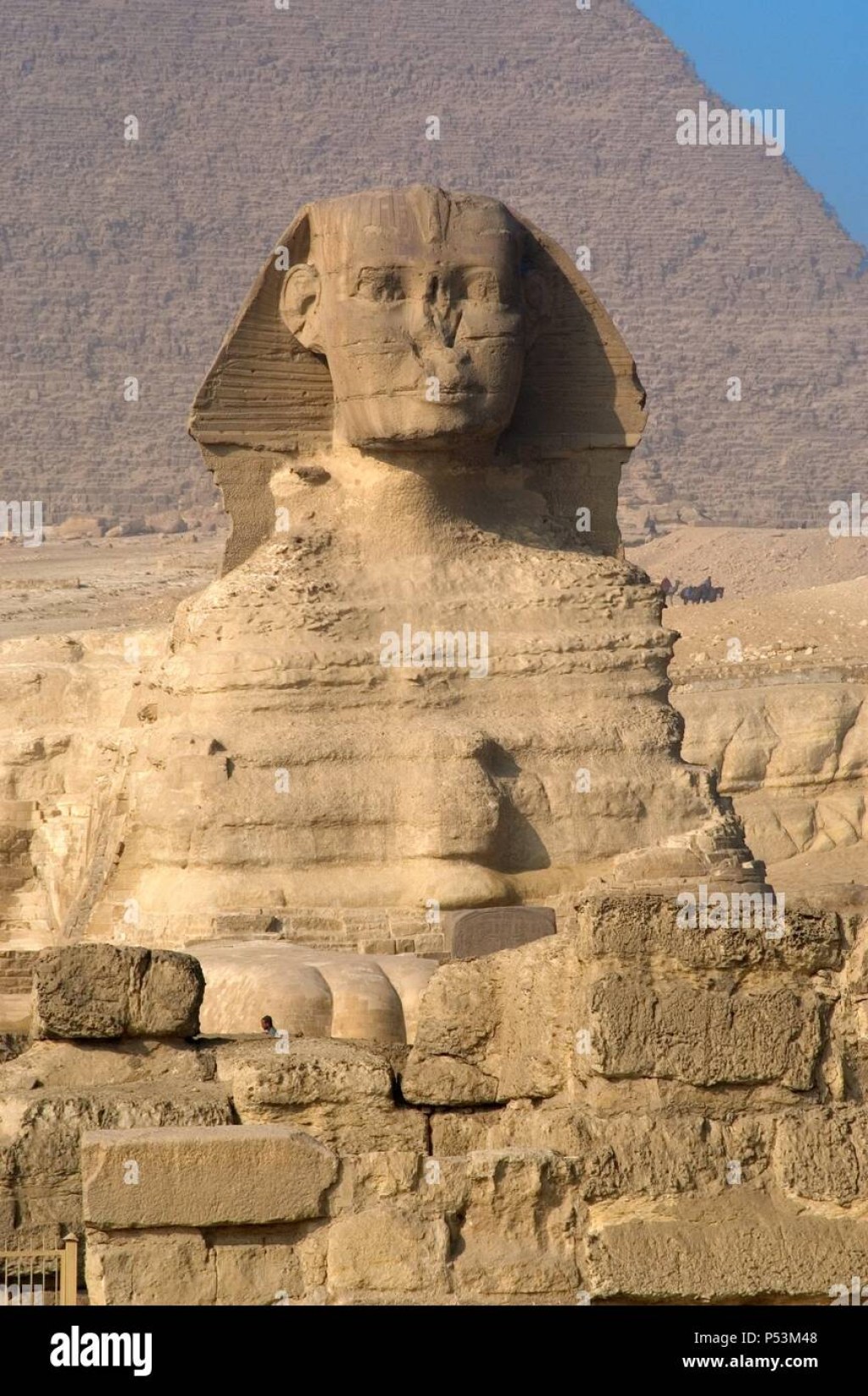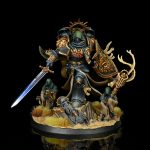The Majestic Pharaoh’s Head Lion Sculpture: Behold The Enchanting Giant Masterpiece!
Giant Sculpture of a Lion with a Pharaoh’s Head: A Majestic Symbol of Power and Royalty
Introduction
Hello, Lions Enthusiast, and welcome to this fascinating journey into the world of ancient Egypt. In this article, we will explore the mesmerizing tale of a giant sculpture of a lion with a pharaoh’s head – a majestic symbol of power and royalty. Join us as we delve into the history, significance, and awe-inspiring beauty of this magnificent masterpiece.
1 Picture Gallery: The Majestic Pharaoh’s Head Lion Sculpture: Behold The Enchanting Giant Masterpiece!

1️⃣ It is said that a picture is worth a thousand words, but what about a massive sculpture that stands tall and proud, silently narrating a tale of a glorious past? This captivating artwork encapsulates the essence of ancient Egyptian civilization, where the lion and the pharaoh symbolize strength, authority, and divinity.
2️⃣ The giant sculpture of a lion with a pharaoh’s head is a testament to the exceptional craftsmanship and artistic abilities of ancient Egyptians. With its intricate details and imposing presence, it has captured the imagination of people from all walks of life, transcending time and leaving us in awe of its grandeur.

Image Source: alamy.com
3️⃣ In this article, we will uncover the story behind this remarkable creation – from its origins to its purpose. We will also explore the advantages and disadvantages of such sculptures and answer some frequently asked questions. So, without further ado, let’s embark on this enchanting voyage through history.
4️⃣ But first, let’s dive into the details and uncover what makes this giant sculpture of a lion with a pharaoh’s head so special.
What is the Giant Sculpture of a Lion with a Pharaoh’s Head?
The giant sculpture of a lion with a pharaoh’s head is a monumental artwork that merges the regal features of a pharaoh with the majestic presence of a lion. It is a representation of the pharaoh’s power, authority, and connection to the divine.
1️⃣ The lion, known as the king of the jungle, symbolizes strength, courage, and protection. In ancient Egyptian culture, it was associated with the sun god Ra and was believed to possess supernatural powers.
2️⃣ On the other hand, the pharaoh, considered the earthly embodiment of the gods, was revered as the ruler of Egypt. The combination of a lion and a pharaoh in this sculpture signifies the pharaoh’s divine authority and his ability to protect and lead his people.
3️⃣ These sculptures were often carved from stone, such as limestone or granite, and could reach astonishing sizes, towering above the onlookers who marveled at their magnificence.
4️⃣ The lion’s head would be intricately carved with the pharaoh’s features, including the traditional headdress, known as the nemes, and the uraeus, a symbol of divine power. The body of the sculpture would be depicted as a powerful lion, with its muscular form and fierce expression.
5️⃣ These sculptures were not only meant to be admired but also served a practical purpose. They were often placed at the entrances of temples, palaces, and other important buildings to guard and protect the sacred spaces from evil spirits and intruders.
6️⃣ The giant sculpture of a lion with a pharaoh’s head is a timeless masterpiece that continues to fascinate and inspire awe in all who lay eyes upon it. Its symbolism and significance make it a cherished artifact from the ancient world.
Who Created the Giant Sculpture of a Lion with a Pharaoh’s Head?
The creation of these magnificent sculptures can be attributed to the skilled artisans and craftsmen of ancient Egypt. These highly talented individuals dedicated their lives to mastering the art of sculpture and bringing the visions of their pharaohs to life.
1️⃣ The process of creating such a sculpture was intricate and required great attention to detail. Skilled artisans would carefully select the stone, ensuring its durability and suitability for the project.
2️⃣ Once the stone was chosen, the artisans would meticulously carve the lion’s head with the pharaoh’s features. This involved precision and expertise to capture the likeness and expressions of the pharaoh accurately.
3️⃣ The body of the sculpture would then be sculpted, paying close attention to the lion’s muscular form and regal stance. Every curve, every line, and every contour was carefully crafted to convey a sense of power and majesty.
4️⃣ The artisans would often work in teams, with each member specializing in a particular aspect of the sculpture. This collaborative effort ensured that every intricate detail was meticulously executed, resulting in a masterpiece that would stand the test of time.
5️⃣ These sculptures were not only a testament to the skills of the individual artisans but also to the collective talent and creativity of the entire community. They were a reflection of the pride and dedication the ancient Egyptians had for their civilization and the desire to honor their pharaohs.
6️⃣ The giant sculptures of lions with pharaoh’s heads were not mass-produced but were commissioned by pharaohs and other important figures. Each sculpture was unique, created to honor a specific pharaoh and commemorate their achievements.
7️⃣ Today, we marvel at the skill and artistry of these ancient craftsmen, whose work continues to captivate and inspire us.
When Were the Giant Sculptures of Lions with Pharaoh’s Heads Created?
The giant sculptures of lions with pharaoh’s heads were created during the ancient Egyptian period, specifically during the New Kingdom era, which lasted from approximately 1550 BCE to 1077 BCE.
1️⃣ The New Kingdom was considered the golden age of ancient Egypt, characterized by political stability, military conquests, and monumental building projects. It was during this period that these awe-inspiring sculptures reached their peak in terms of size and grandeur.
2️⃣ Pharaohs, such as Amenhotep III and Ramses II, were known for their ambitious construction projects, which included the creation of these massive sculptures. These pharaohs aimed to demonstrate their divine status and leave a lasting legacy for future generations.
3️⃣ The precise dates of when these sculptures were created can vary, as the New Kingdom spanned several centuries. However, many of them were constructed during the reigns of pharaohs in the 18th and 19th dynasties.
4️⃣ Despite the passage of time, these sculptures have managed to survive and provide us with invaluable insights into the artistic and cultural achievements of ancient Egypt.
5️⃣ Today, these sculptures can be found in various museums and archaeological sites around the world, allowing us to appreciate their beauty and understand the significance they held in the ancient Egyptian society.
Where Can You Find Giant Sculptures of Lions with Pharaoh’s Heads?
The giant sculptures of lions with pharaoh’s heads can be found in various locations, both in Egypt and other parts of the world. These majestic artworks have traveled far and wide, captivating audiences across different cultures and continents.
1️⃣ Many of these sculptures can still be admired in their original locations, such as the Luxor Temple and the Karnak Temple Complex in Egypt. These temples were dedicated to the worship of the gods and were adorned with numerous statues and sculptures.
2️⃣ The Sphinx, one of the most iconic sculptures in the world, can also be considered a giant sculpture of a lion with a pharaoh’s head. It is located in Giza, Egypt, near the Great Pyramids, and is a remarkable example of the fusion of the lion and pharaoh symbolism.
3️⃣ Other significant locations where these sculptures can be found include the British Museum in London, the Louvre Museum in Paris, and the Metropolitan Museum of Art in New York City. These museums house impressive collections of ancient Egyptian art, including these majestic sculptures.
4️⃣ In recent years, replicas and smaller-scale versions of these sculptures have been created and can be found in various exhibitions and cultural centers around the world. These replicas offer a glimpse into the grandeur of the original sculptures, allowing a wider audience to appreciate their beauty.
5️⃣ Whether you visit the original locations or marvel at the replicas, encountering these giant sculptures of lions with pharaoh’s heads is an experience that transports you back in time and allows you to connect with the ancient Egyptian civilization.
Why are Giant Sculptures of Lions with Pharaoh’s Heads Significant?
The giant sculptures of lions with pharaoh’s heads hold significant cultural, historical, and artistic value. Their symbolism and presence have left an indelible mark on the ancient Egyptian civilization and continue to captivate and inspire us today.
1️⃣ The symbolism embodied in these sculptures is profound. They represent the power, authority, and divine status of the pharaoh, who was considered the intermediary between the gods and the people. The fusion of the lion and pharaoh imagery emphasizes the pharaoh’s ability to protect and lead his kingdom.
2️⃣ These sculptures also provide invaluable insights into the religious and cultural beliefs of ancient Egyptians. They highlight the importance of animal symbolism in their mythology and the deep reverence they held for the pharaoh as a god-like figure.
3️⃣ From an artistic perspective, these sculptures showcase the exceptional skills of ancient Egyptian artisans. The precise carving, intricate details, and monumental scale demonstrate their mastery of the craft and their ability to create enduring works of art.
4️⃣ These sculptures were not only objects of admiration but also served a practical purpose. Placed at the entrances of important buildings, they acted as guardians, protecting the sacred spaces from malevolent forces and intruders.
5️⃣ The significance of these sculptures extends beyond their original purpose. They serve as a reminder of the greatness of the ancient Egyptian civilization and the enduring legacy they left behind. They inspire us to explore and appreciate the wonders of the past.
How Were Giant Sculptures of Lions with Pharaoh’s Heads Created?
The creation of giant sculptures of lions with pharaoh’s heads required meticulous planning, skilled craftsmanship, and an unwavering dedication to perfection. The process involved several stages and required the collaboration of various individuals.
1️⃣ The first step was to select the appropriate stone for the sculpture. Various types of stone were used, including limestone and granite, depending on their availability and suitability for the project.
2️⃣ Once the stone was chosen, the artisans would create a rough outline of the sculpture, marking the general shape and proportions. This served as a guide for the subsequent stages of the carving process.
3️⃣ The lion’s head, with the pharaoh’s features, would be meticulously carved using chisels and other carving tools. This required great precision and attention to detail to capture the likeness and expressions of the pharaoh accurately.
4️⃣ The body of the lion would then be sculpted, with emphasis on its muscular form and regal posture. Every curve, every line, and every contour was carefully crafted to evoke a sense of power and majesty.
5️⃣ The artisans would work in teams, with each member specializing in a specific aspect of the sculpture. This collaborative effort ensured that every detail, no matter how small, was meticulously executed.
6️⃣ Once the carving was complete, the sculpture would undergo a process of smoothing and polishing to enhance its appearance and ensure its durability. This involved using sandpaper, pumice stone, and other abrasive materials to achieve a smooth and lustrous finish.
7️⃣ Finally, the sculpture would be transported to its intended location, where it would be carefully placed and secured. These sculptures were often positioned at the entrances of temples and important buildings, where they would stand as guardians and protectors.
Advantages and Disadvantages of Giant Sculptures of Lions with Pharaoh’s Heads
Advantages
1️⃣ Enhanced Aesthetics: The presence of giant sculptures of lions with pharaoh’s heads adds a touch of grandeur and beauty to any space. Their imposing size and intricate details command attention and create a sense of awe.
2️⃣ Symbolism and Cultural Significance: These sculptures carry deep symbolism and reflect the rich cultural heritage of ancient Egypt. They serve as a reminder of the power and authority of the pharaoh and the reverence the ancient Egyptians had for their rulers.
3️⃣ Historical Importance: These sculptures provide a tangible link to the past, allowing us to immerse ourselves in the history and achievements of ancient Egypt. They offer valuable insights into the religious, social, and artistic aspects of this fascinating civilization.
4️⃣ Tourism and Economy: The presence of these sculptures in museums, archaeological sites, and cultural centers attracts tourists from around the world. This boosts local economies and promotes cultural exchange and understanding.
5️⃣ Preservation of Heritage: By preserving and displaying these sculptures, we ensure that future generations can appreciate and learn from the ancient Egyptian civilization. They serve as a testament to the ingenuity and creativity of our ancestors.
Disadvantages
1️⃣ Preservation Challenges: Over time, these sculptures can deteriorate due to environmental factors, vandalism, and neglect. Ensuring their preservation requires ongoing maintenance and conservation efforts.
2️⃣ Cost and Resources: Creating and maintaining giant
This post topic: Lions



